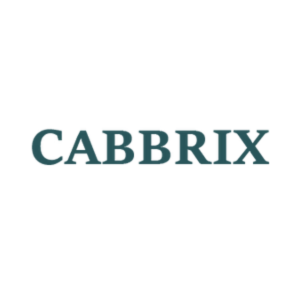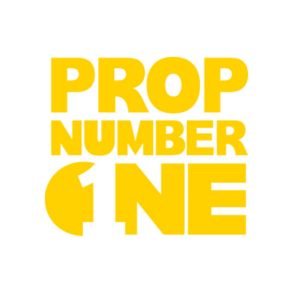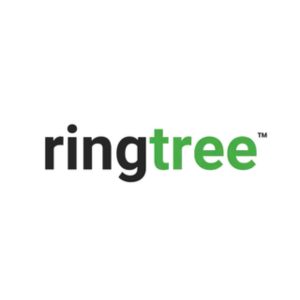
The Best Way to Save and Invest Money for Future Wealth Creation
Introduction
Why Future Wealth Creation Requires a Plan
Building future wealth starts with a clear plan. The best way to save and invest money is to focus on specific goals. A plan helps you track your savings and choose investments wisely.
Without a plan, it’s easy to overspend or miss opportunities. Planning ensures you save enough and invest in the right places. It also helps you stay prepared for unexpected expenses.
A good plan simplifies financial decisions. It lets you manage risks and grow your money steadily. By planning now, you can secure your future and build lasting wealth.
Understanding the Basics of Saving and Investing
Defining the Best Way to Save and Invest Money
The best way to save and invest money combines discipline and strategy. Saving ensures you have funds readily available for emergencies or short-term needs. Investing, on the other hand, helps grow your wealth over time by generating returns. A balanced approach between the two is essential for long-term financial success.
Saving alone doesn’t build wealth due to low returns, while investing without savings can leave you vulnerable to unexpected expenses. The key is to set clear financial goals, allocate funds accordingly, and regularly evaluate your progress.
The Importance of Balancing Savings and Investments
Balancing savings and investments is crucial for both stability and growth. Savings provide liquidity, giving you access to cash when needed. Investments, however, generate returns that outpace inflation and grow your wealth. Without this balance, you risk financial insecurity or stagnant wealth.
Start by allocating a portion of your income to a savings account for emergencies. Simultaneously, invest in diversified assets like stocks, bonds, or mutual funds. Regularly review and adjust this balance based on your financial goals and life changes. A thoughtful balance ensures you’re prepared for today while building wealth for the future.
Steps to Start Saving Money Effectively
Creating a Budget for Financial Clarity
The best way to save and invest money begins with creating a clear and practical budget. A budget helps you track your income and expenses, giving you a clear picture of your financial health. Start by listing all your monthly income sources and categorizing your expenses into essentials, discretionary spending, and savings.
With a budget in place, you can identify areas where you can cut back and allocate more toward savings or investments. This clarity ensures that every dollar has a purpose, making it easier to stay on track with your financial goals.
Building an Emergency Fund: The Foundation of Financial Security
An emergency fund is your financial safety net. It provides immediate access to funds during unexpected situations like medical emergencies, job loss, or urgent repairs. To start, aim to save three to six months’ worth of living expenses in a high-yield savings account.
This fund ensures you don’t have to rely on credit or dip into long-term investments during tough times. Building and maintaining an emergency fund is a critical first step in the journey to secure financial freedom.
Smart Saving Tips for Consistent Growth
Consistent saving is the cornerstone of wealth creation. Automate your savings by setting up direct transfers to a dedicated account each month. This approach ensures you prioritize savings before spending.
Additionally, look for opportunities to reduce unnecessary expenses, such as dining out less frequently or finding better deals on recurring bills. Over time, small adjustments can lead to significant growth in your savings.
By combining a clear budget, an emergency fund, and smart saving habits, you can lay a strong foundation for both financial stability and long-term wealth creation.
Investment Strategies for Long-Term Wealth Creation
Diversifying Your Portfolio: A Key to Success
One of the best ways to save and invest money is by diversifying your investment portfolio. Spreading your investments across different asset classes—such as stocks, bonds, real estate, and commodities—reduces risk. When one investment underperforms, others may perform well, helping to stabilize overall returns.
A diversified portfolio ensures that you're not overly exposed to any single asset's volatility. Over time, this strategy helps build consistent wealth while minimizing significant losses, making it a cornerstone of long-term financial success.
Exploring Low-Risk and High-Risk Investment Options
The best way to save and invest money also involves knowing where to put your money based on your risk tolerance. Low-risk investments, such as government bonds or savings accounts, offer stability and steady returns. These are ideal if you’re seeking security or if you’re new to investing.
On the other hand, high-risk investments like stocks, venture capital, or cryptocurrencies can offer higher returns but come with greater potential for loss. A balanced approach that aligns with your financial goals and time horizon is crucial. It’s essential to adjust your investment strategy as your financial situation changes, ensuring that both low and high-risk assets are accounted for in your portfolio.
The Role of Compounding in Wealth Creation
Compounding is one of the most powerful tools in the best way to save and invest money. When you reinvest your earnings, such as dividends or interest, you generate returns on both your original investment and the accumulated earnings. Over time, this process accelerates the growth of your wealth.
The earlier you start investing, the more you can benefit from compounding. Even small investments can grow significantly with time, as the compounded returns continue to build on themselves. Patience and consistency are key to unlocking the full potential of compounding in wealth creation.
Choosing the Best Way to Save and Invest Money for Your Goals
Aligning Savings and Investments with Short-Term and Long-Term Goals
The best way to save and invest money is to align your strategy with both short-term and long-term financial goals. Short-term goals, such as buying a car or going on vacation, require more liquid savings, so you should focus on low-risk, easily accessible accounts like high-yield savings or money market accounts.
For long-term goals, such as retirement or buying a home, investments with higher growth potential, like stocks, bonds, or real estate, are more appropriate. These assets might carry higher risks in the short run but tend to offer higher returns over time. The key is to balance your investments according to the timeline and risk level that matches each goal, ensuring that your financial plan stays on track.
Identifying Financial Tools That Suit Your Lifestyle
The best way to save and invest money also involves choosing financial tools that align with your lifestyle. For instance, if you prefer a hands-off approach, robo-advisors or automated investment platforms can help manage your portfolio with minimal effort. If you're more hands-on and enjoy researching investments, a self-managed brokerage account may be a better fit.
Additionally, tools like retirement accounts (RRSP, 401(k)) or tax-advantaged savings accounts (like an RESP for education) can offer significant benefits depending on your goals. Identifying the right financial tools, based on how much time you want to spend managing your investments and your specific financial needs, ensures you maximize your potential for wealth creation while minimizing stress.
Leveraging Technology for Saving and Investing
Using Apps to Simplify Saving and Track Investments
The best way to save and invest money today is made easier with apps that help you track and manage your finances. Saving and investing can be overwhelming, but with tools like budgeting apps, investment trackers, and robo-advisors, you can simplify the process.
Apps like Mint or YNAB (You Need a Budget) allow you to monitor your spending, set saving goals, and create budgets. Investment apps, such as Wealth Simple or Acorns, provide easy access to diverse portfolios, automatically invest your spare change, and give you real-time updates on your progress. These apps offer user-friendly interfaces and tools that help you stay on track with your savings and investments, even if you're new to managing money.
Online Platforms for Easy Access to Investment Opportunities
The best way to save and invest money also involves leveraging online platforms that offer easy access to a wide range of investment opportunities. Whether you want to invest in stocks, bonds, mutual funds, or real estate, these platforms provide a convenient way to get started without needing a financial advisor.
Websites like E*TRADE, Robinhood, and Vanguard allow you to trade stocks, ETFs, and other investment products directly from your phone or computer. These platforms offer low fees and the flexibility to manage your investments at your own pace. Furthermore, some platforms provide educational resources to help you understand the basics of investing, making them a great starting point for beginners.
By using apps and online platforms, you can streamline your approach to saving and investing, ensuring you stay organized, informed, and in control of your financial future.
Mistakes to Avoid in Saving and Investing
Common Pitfalls and How to Overcome Them
The best way to save and invest money can easily be derailed by common mistakes that many investors make. One major pitfall is neglecting to diversify. Sticking to one type of investment, such as putting all your money in stocks or a single sector, increases your risk significantly. To overcome this, spread your investments across various asset classes, ensuring a balanced portfolio that mitigates risk.
Another mistake is procrastination. Many people delay investing due to uncertainty or fear of making the wrong decision. The key to overcoming this is starting small and learning as you go. Even if you start with minimal amounts, the consistency of your contributions over time is what makes a real difference.
Lastly, failing to regularly review your financial plan can lead to missed opportunities or outdated strategies. Set a routine for checking your portfolio and adjusting your investments as needed, particularly as your goals evolve.
Why Emotional Decision-Making Can Hurt Financial Growth
Emotional decision-making is one of the biggest barriers to financial success. The best way to save and invest money involves logic and strategy, not emotional impulses. Fear and greed often lead to poor investment choices, such as selling during market downturns or chasing high-risk investments in search of quick returns.
Emotions can also cause you to deviate from your long-term goals. When markets are volatile, it’s easy to panic and make hasty decisions. On the other hand, periods of high returns may tempt you to take on more risk than you’re comfortable with. To prevent emotional decision-making from hindering your financial growth, it’s important to stay focused on your plan, stick to your investment strategy, and avoid reacting impulsively to market fluctuations.
By recognizing these pitfalls and keeping your emotions in check, you set yourself up for sustainable, long-term wealth creation.
Conclusion
Taking Action: Your Path to Future Wealth Creation
The best way to save and invest money is rooted in thoughtful planning, consistency, and the ability to adapt to your financial goals over time. By aligning your savings and investments with both short-term and long-term objectives, diversifying your portfolio, and using the right financial tools, you’re setting a solid foundation for future wealth creation.
But it’s not enough to just learn the strategies; taking action is where true success begins. Start small, stay consistent, and adjust your approach as needed. Whether you use apps to track your progress or online platforms to access investment opportunities, taking control of your financial future is essential.
Remember, the journey to financial success doesn’t require perfection—just the willingness to start, learn, and grow. By taking actionable steps today, you’re paving the way for a prosperous future. Your wealth creation starts now.

















